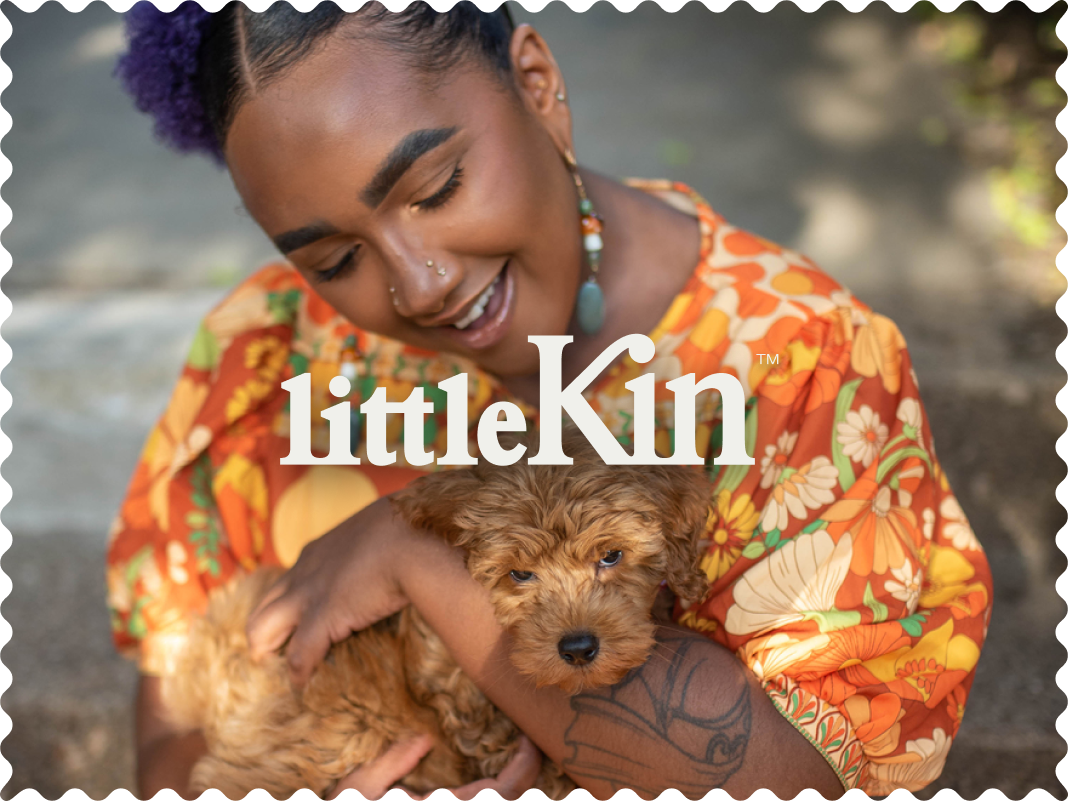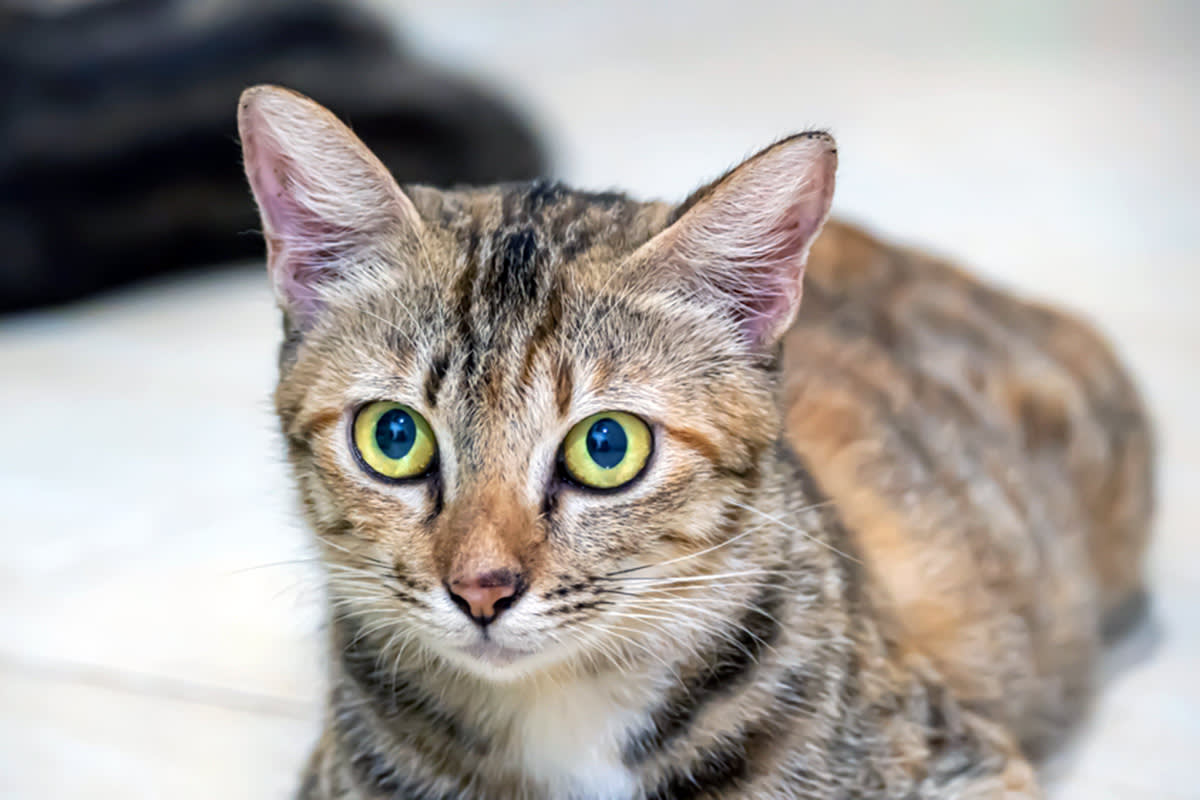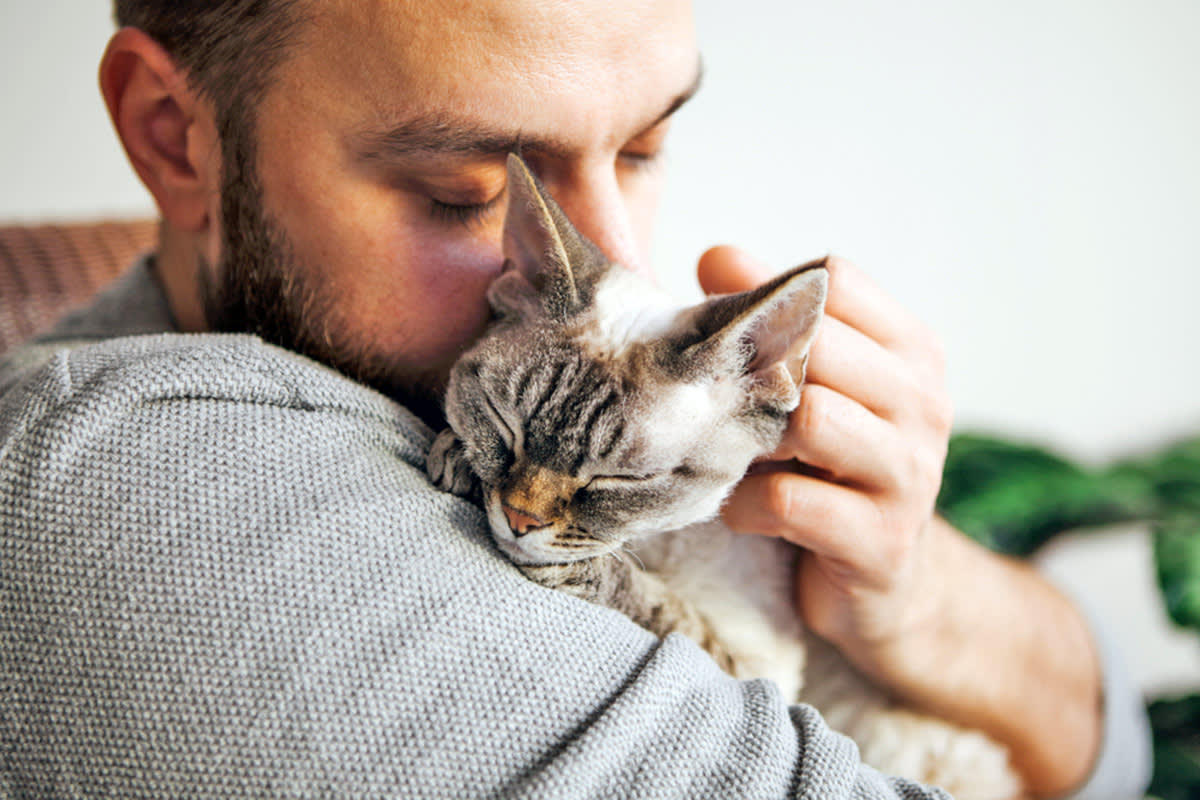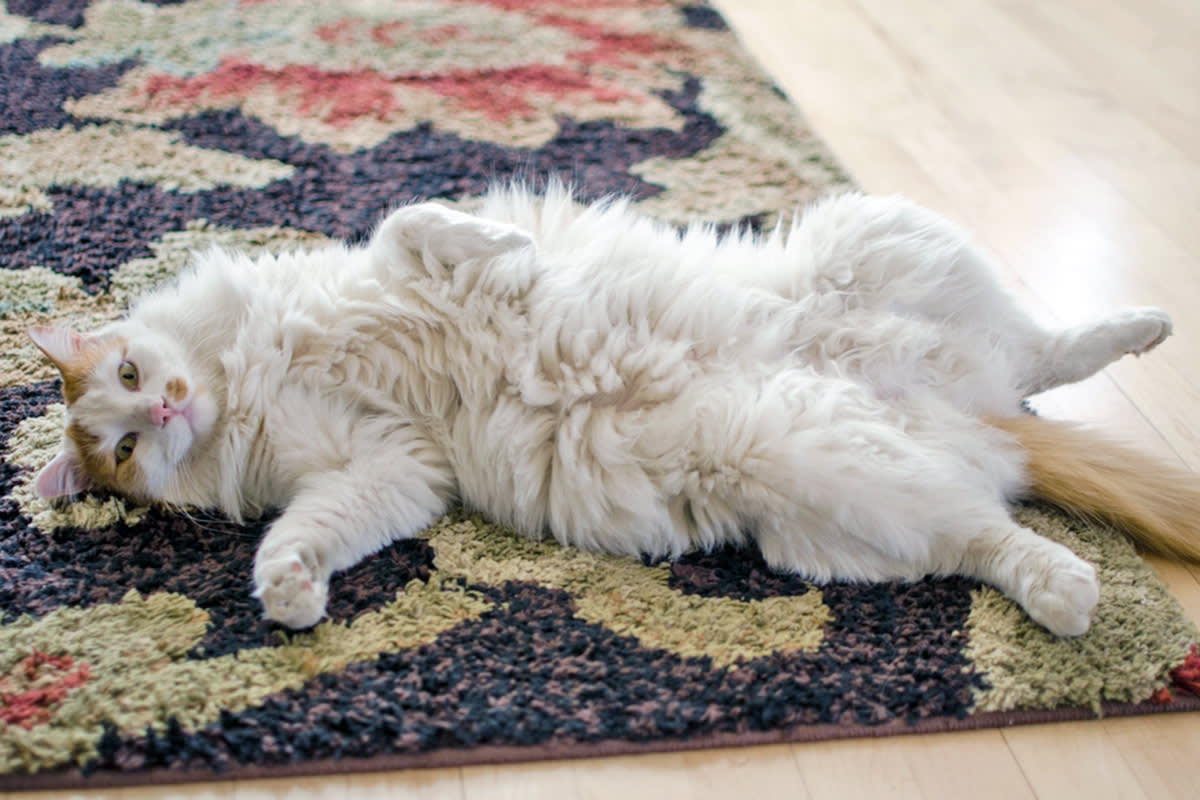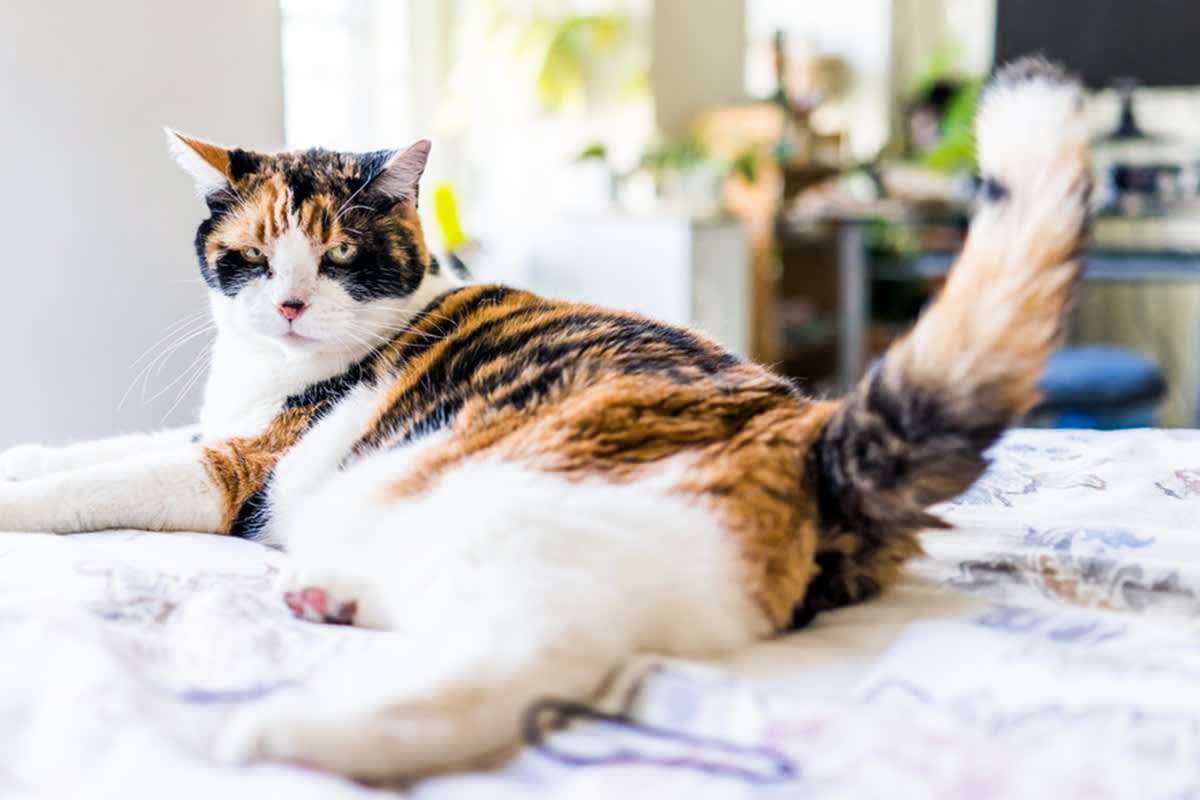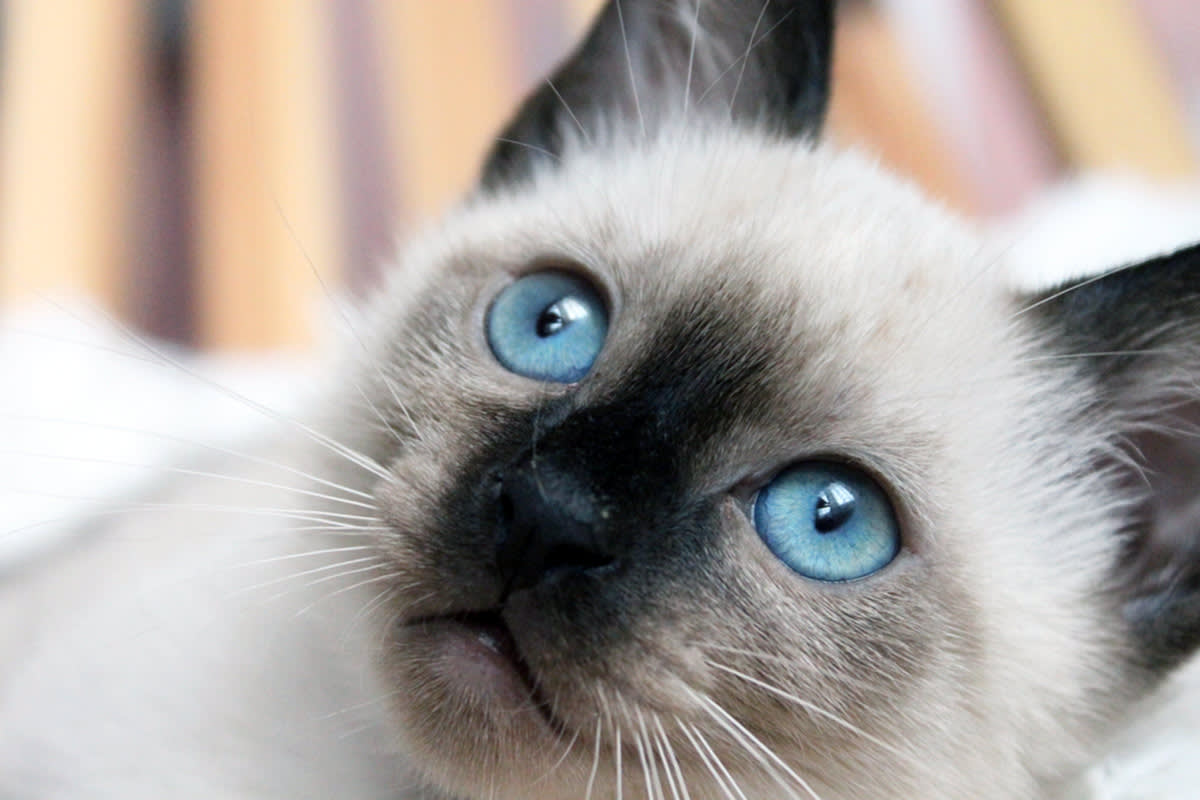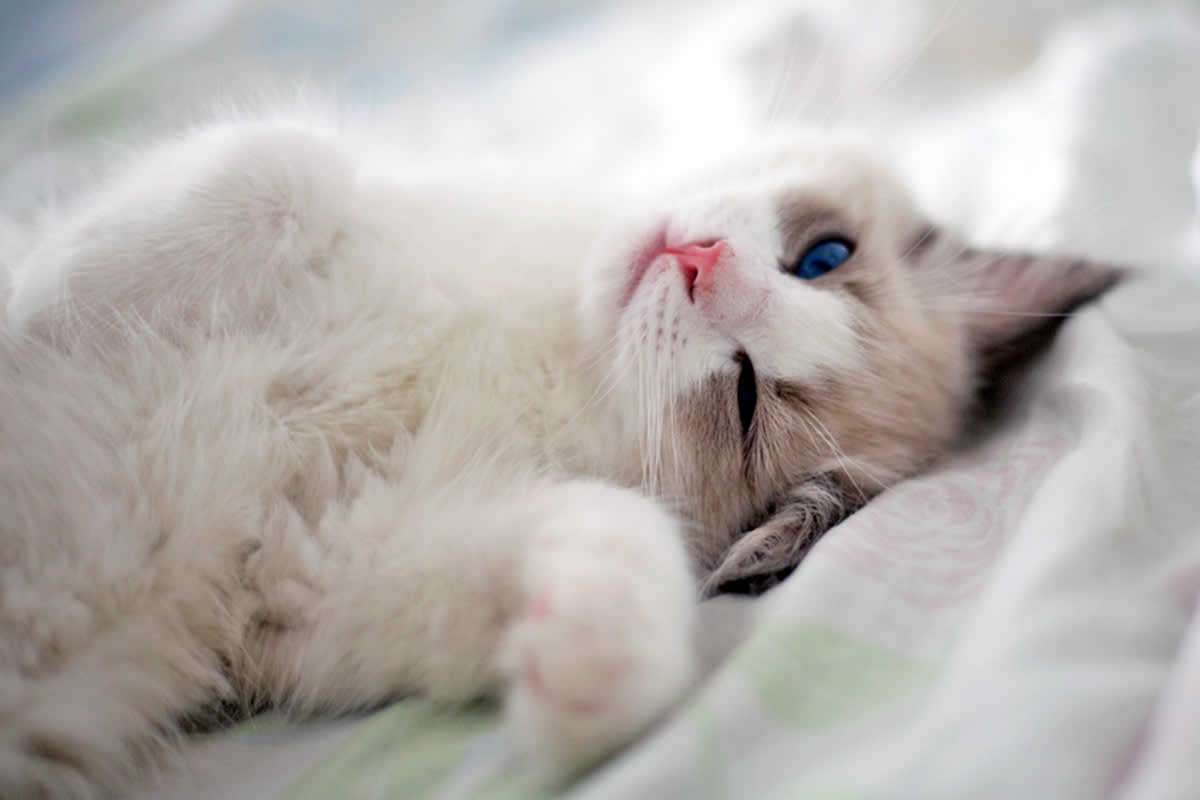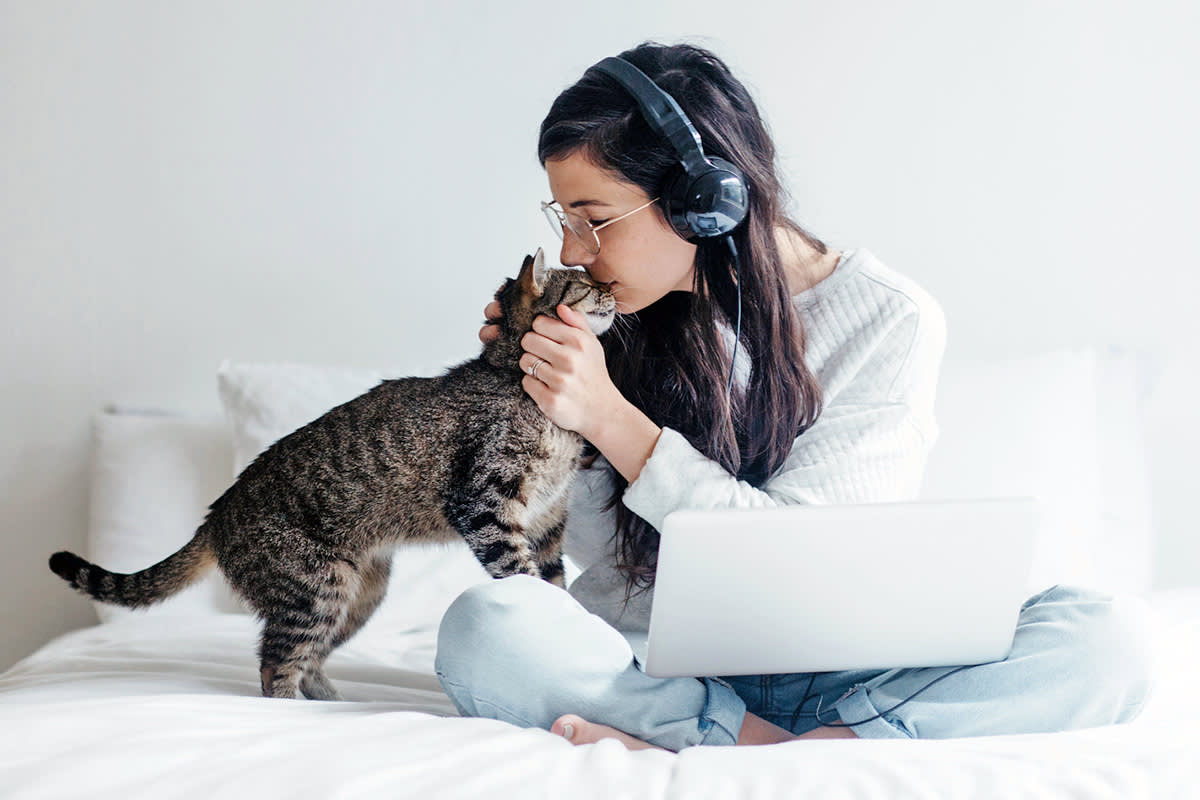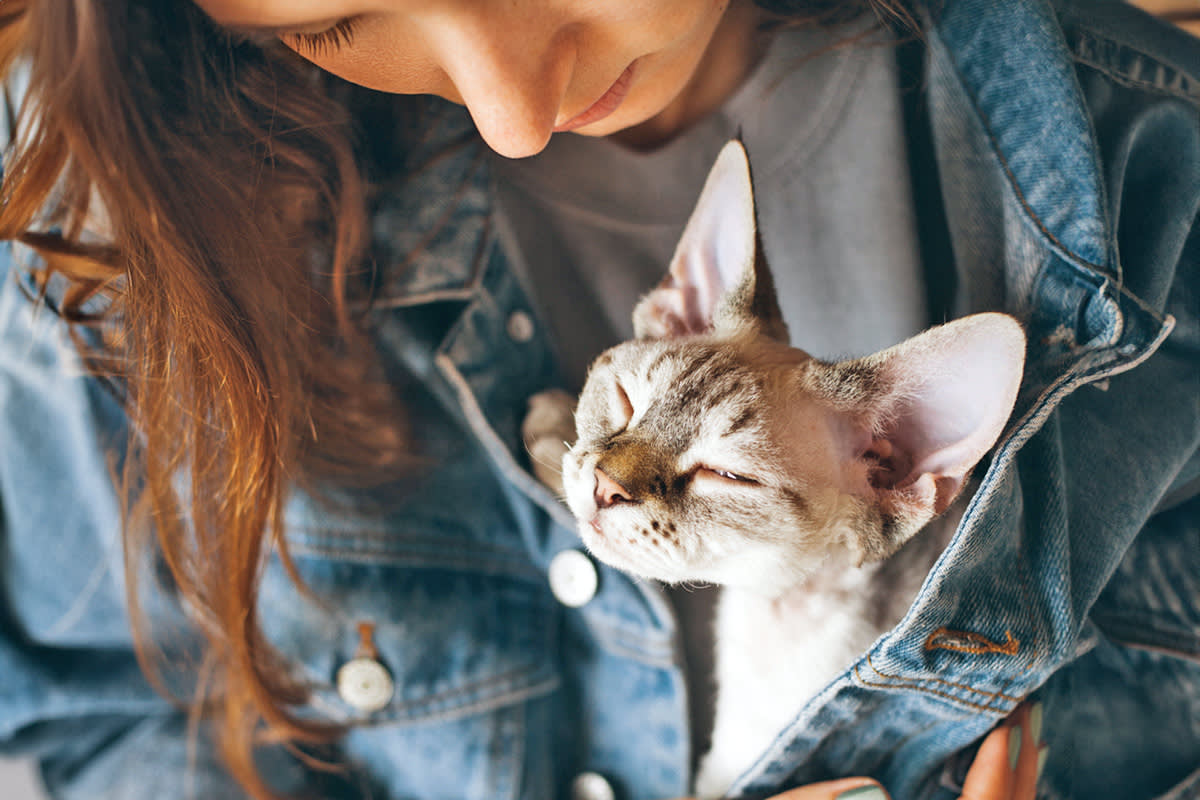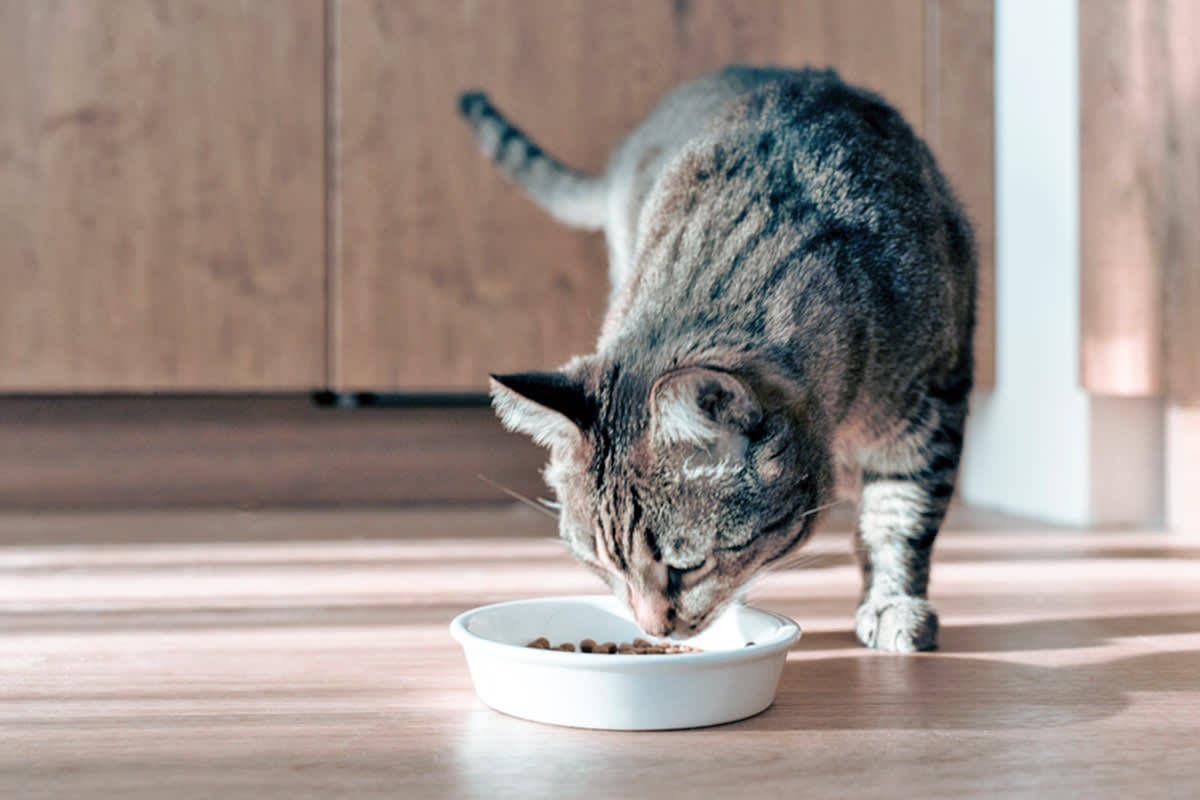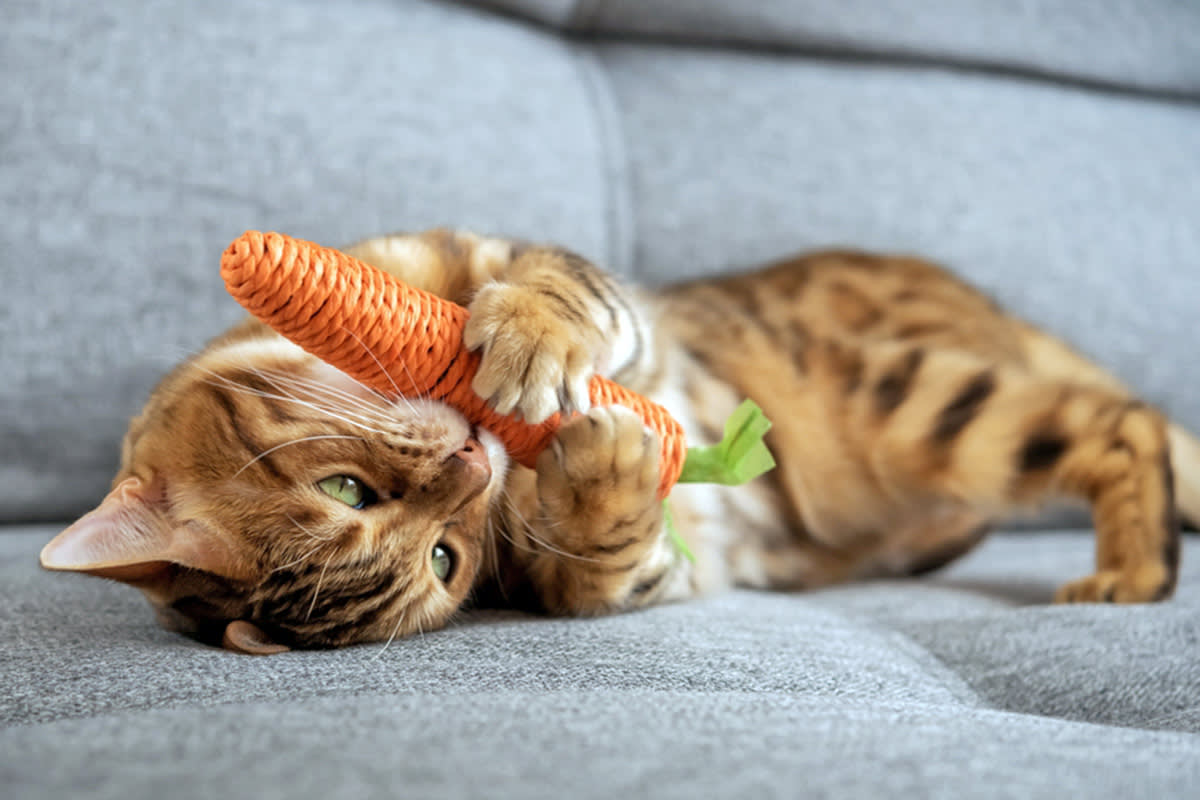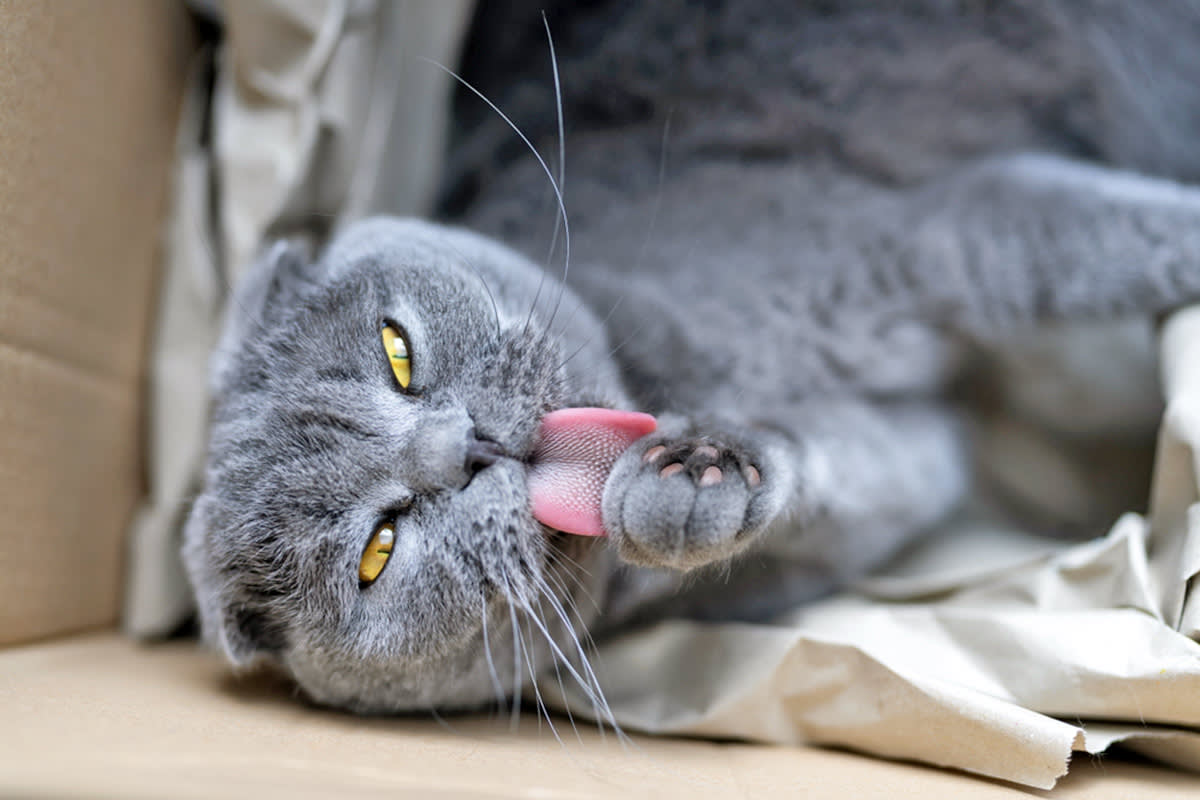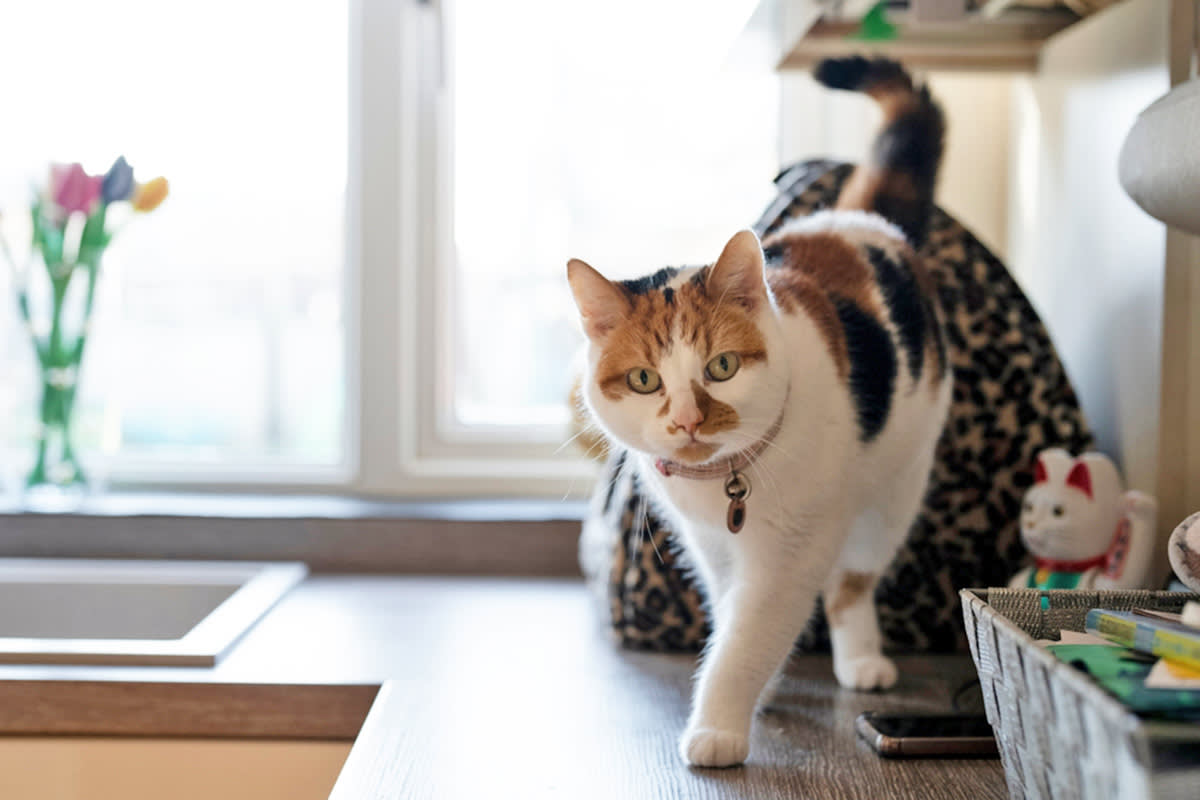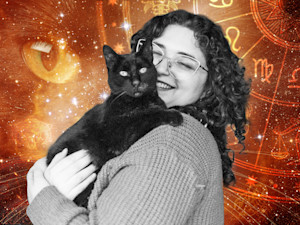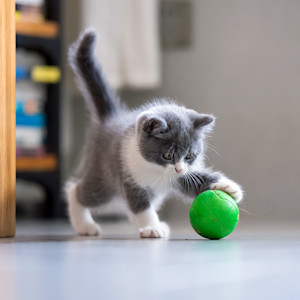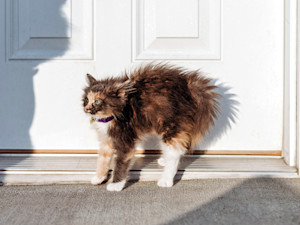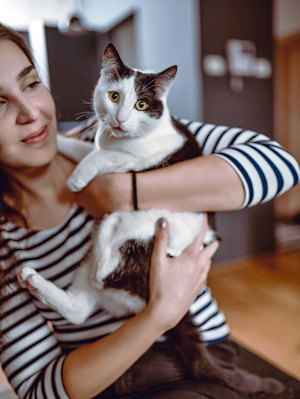12 Ways to Tell That Your Cat Is Happy
It’s all in the eyes... and ears and tail. And so much more.
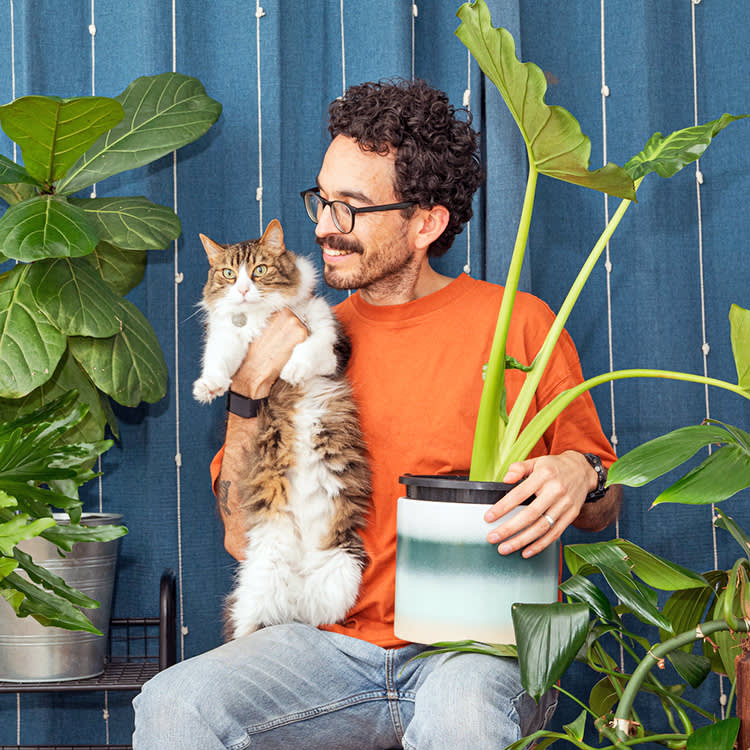
Share Article
Despite having 276 facial expressions, it can be difficult to tell if your cat is content. They don’t wag their tails like dogsopens in new tab, have “smiles” on their faces, and don’t usually indulge in “happy dances” on their hind legs when their pet parents come home. Plus, to make it even more confusing, purring can be both a good and a bad thing. Many pet parents find that they learn to read their cat’s body language and figure out their cat’s emotionsopens in new tab, but getting some definitive signs and proof helps ease any anxious cat parent’s mind.
“There can be so many different signs, ranging from big and obvious to very subtle,” LeeAnna Buis, a cat behaviorist who works for Feline Behavior Solutions,opens in new tab says. “It’s really about how comfortable your cat seems in the situation — whether they appear open and relaxed or on alert and ready to react. It can take practice to pick up on the less obvious signs, but it’s worth the effort.”
So, if you’re concerned about whether your kitty is actually happy or not, we’re here to throw you several bones, er, mouse toys.
What are some physical cues that indicate their good mood?
If you struggle to read your cat’s many facial expressions, there are other easily identifiable signs that their bodies give away that show whether they’re happy or not. Our feline behavior experts both mentioned these as examples.

“Happy cats are relaxed, not stressed, or they might be curious, even excited. But overall, their appearance [shows that they are] having their needs being met or they [are] well-integrated into their environment,” says Stephen Quandt, certified cat behaviorist and founder of Stephen Quandt Feline Behavior Associatesopens in new tab, LLC. “If they’re relaxed, then their bodies will be soft. They may sit in the loaf position, or lounge on their side, or partially on the side with the front half of their bodies lying chest down and the rear half sideways.”
Their ears are pointing forward.
Ears that point forward are an indicator that your cat is relaxed, and thus happy. In this position, their ears aren’t moving around their head on high-alert, trying to assess noise that could be threatening to them.
Ears that move out to the side, however, mean that a cat isn’t feeling comfy. “Ears moving away (to the sides) is a sign of cautiousness and ears moving back is a sign of fear,” says Jennifer Van de Kieft, certified cat behavioristopens in new tab and owner of Cat Advocate.
They are a purr machine.
There’s nothing more satisfying for a cat parent than to hear your cat’s purr engine running. The feeling of a warm, purring kitten on your lap for hours is matched by no other. It’s almost like we can feel our serotonin levels rising in real time. And yes, purring is generally considered a sign that your cat is happy — with a few exceptions.
“Purring is often a sign of a happy cat, though it can also be a self-soothing behavior in certain circumstances such as when injured or sick,” Van de Kieft says.
They look super chilled out.
“Happy cats often display relaxed body language,” Van de Kieft says. “They may by lying on their back, belly exposed. They may sprawl out (versus keeping their body tight — a sign of anxiety or pain).” It means they’re chilling and don’t see you or the other people and pets who might live with you as a stressor.
But keep in mind that your cat isn’t going to be lounging all of the time. “Of course, a happy cat in the middle of an intense play session opens in new tab is going to show different body language than a half-asleep happy cat or one who's ready to cuddle,” Buis adds. “That’s why it’s so important to learn about the various ways cats use body language to communicate.”
Their tail is high and loose.
“A high, loose tail is a good sign,” Buis says. “It may be S-shaped or waving softly back and forth.” If your kitty’s tail is proudly waving in the air like they just don’t care; it’s because they don’t. Their guard isn’t up. It’s a little hint that you might miss on a daily basis, but it’s an easy one to spot. Next time you’re getting ready for bed, watch to see if you see a little fluffy periscope circling your bed like a shark’s fin in water; that means your cat is content.
They hit you with the soft gaze.
What does a soft gaze mean? It means that your cat isn’t interested in having a staring contest with you, per Buis. It’s kind of like when humans are in a yoga class and the instructor asks you to have a “soft focus” on something. Your cat should look vaguely meditative or that they’re contemplating world domination in a casual way. The cat’s pupils should also be a normal size (not dilated), Van de Kieft says.
All of that said, if your cat is playing, their pupils will be dilated. So, there are always exceptions to the rule. But if your cat is resting or sleeping, it’s a great time to be looking out for whether their gaze is soft or if they seem like they’re vigilantly guarding the room.
Or they shoot a slow-blink in your direction.
If you read Kinship regularly or are on the cat algorithm on Instagram or TikTok, you’ve likely heard of the concept of “slow blinking.” When cats are at their most relaxed, like when they’re cuddling on your lap, they will blink slowly to show you that they feel trust, affection, and safe in your presence. If you want to tell them you feel the same way, you can slow-blink back at them. The jury is still out as to whether they fully recognize this gesture in humans, but we like to think so.
What are some behaviors that point to a cheerful mood?
Cats will indulge in certain behaviors if they feel like they trust you and are happy. If they were anxious or not feeling well, they wouldn’t nuzzle your leg as you’re walking by or play with their favorite toy mouse or feather on a string.
They nuzzle you.
If your cat nuzzles up against your hand or rubs against your legs while you’re standing, then that can also be a sign that they feel content with you. “They may rub their faces on your feet and roll over,” Quandt adds. Cats have scent glands on their cheeks and heads, so they’re essentially marking you as their property. Really, it’s the highest compliment a cat can give. They consider you to be part of their family. Cats will also do this with other cats.
They follow up the nuzzles with some high-quality cuddles.
This might seem obvious, but for pet parents who have selectively cuddly cats, it can be a rare gift. When cats cuddle, they often sprawl out on their pet parents, which shows that their body language is relaxed. They feel secure enough to take a nap on you (good luck staying put for the entire duration of your cat’s name), which means they trust you.
On the flip-side, a cat sleeping too much can be a bad thing. “If a cat is anxious or depressed, they may sleep a lot and have limited activity,” Van de Kieft says. “Yes, cats sleep a lot normally, but they should also have periods of time where they are awake, active, approaching you, looking out the window, etc. If a cat is sleeping more and more, that’s something to be concerned about.”
They have a healthy appetite.
This might seem obvious, but it’s such an important indicator. If your cat is eating well, they are likely in good spirits. Cats who aren’t eating enough or changing their eating habits can be stressed or ill. Your cat should be eating regularly, and if they refuse to eat, it might be time to take them into the vet for a check-up. The same goes for not drinking enough water. Cats can struggle with dehydration, which is why it’s key to keep an eye on how much water they consume in a day. If they aren’t drinking water, take a look at these tips here.
They are down to play.
Playing can look different for cats. If your cat gets the zoomies, wants you to throw a hair tie so they can fetch it (look for a more suitable toy they can’t choke on), or wants to bat around a feathered object on a string, all of that constitutes as playing or wanting to play. A playful cat is a happy cat. If a playful cat stops wanting to bat around their favorite toy or becomes listless, consider that a sign as something is wrong.
That said, don’t mistake playing for defense behavior in a cat. “Signs of anxiety might include hiding a lot, hissing (a sign of fear), [and] maybe even defensive aggression if approached,” Buis says. “Eyes might be dilated. They may walk lower to the ground. The hair can be raised.” Licking their lips for no apparent reason can also be a sign of a stressed-out cat, Van de Kieft adds.
They keep up their grooming habits.
Cats lick themselves clean several times a day. Their fur should feel soft and smooth (but not greasy or unkempt, which means they’re unwell). It’s similar to when you don’t take a shower for a few days or brush your hair when you’re feeling stressed or overwhelmed. It’s a subtle cry for help.
They make themselves at home (whether you like it or not).
If your cat is walking around, low to the ground like they’re waiting for something to jump out and scare them, then they are anxious in your home. They should be trotting around, tail held high, as if they paid the rent or mortgage themselves. When cats feel comfortable, they’ll claim every surface (even if you’d rather they stay off the fridge or counter) person, and other animals in the home as theirs.
Cats are territorial, so if they feel like they are treading on territory that doesn’t belong to them, they’ll be on edge. These behaviors will be on display when you first bring a cat into your home, but they should go away in a few weeks.
Is your cat unhappy?
If your cat was happy but you’ve noticed a change in their behavior lately, then it might be cause for some concern. If your own routine has changed or you’ve had a major lifestyle change, it might affect your cat’s happiness.
“If you observe a change without much warning, or even over some time then the first thing to do is get a vet visit and look for medical causes especially if there aren’t obvious external triggers,” Quandt says. “An aging cat might start to exhibit changes, but if you are aware of possible causes like new people in the home, new pets, changes to lifestyle or the home, then you will want to try and help the cat acclimate. Providing extra attention and gentle care, play, food, petting and giving comfort can all help.”

Alicia Kort
Alicia Kort is a writer and editor living in Brooklyn. Her work has appeared in Esquire, InStyle, Apartment Therapy, The Kitchn, Parade Home & Garden, Newsweek, Interview, Brooklyn magazine, and more. In her free time, she runs, reads, and spends time with her dog-nieces, Maya and Lady, and her cat-niece, Pepper. In her work, she focuses on pet behavior, pet-friendly spaces, and the lifestyle commerce space.
Related articles
![Cat making a disgusted face.]()
What Smells Do Cats Like and Dislike?
Yes, cats have a powerful sense of smell.
![Woman holding her cat.]()
Are You and Your Cat Astrologically Compatible?
They might not care about the answer, but you do.
![Small kitten playing with a rubber ball at home.]()
Cats Can’t Stand These Textures—They Have Very Sensitive Paws
It's not just crumpled tin foil.
![Cute scared kitten outside by the front door.]()
7 Surprising Things Cats Are Afraid Of
The term “scaredy-cat” didn’t enter the lexicon out of nowhere.
![Woman holding her scared cat in her arms.]()
Are There Certain Sounds That Cats Hate?
The internet says kitties despise “s” sounds, but it’s a little more complex than that.
